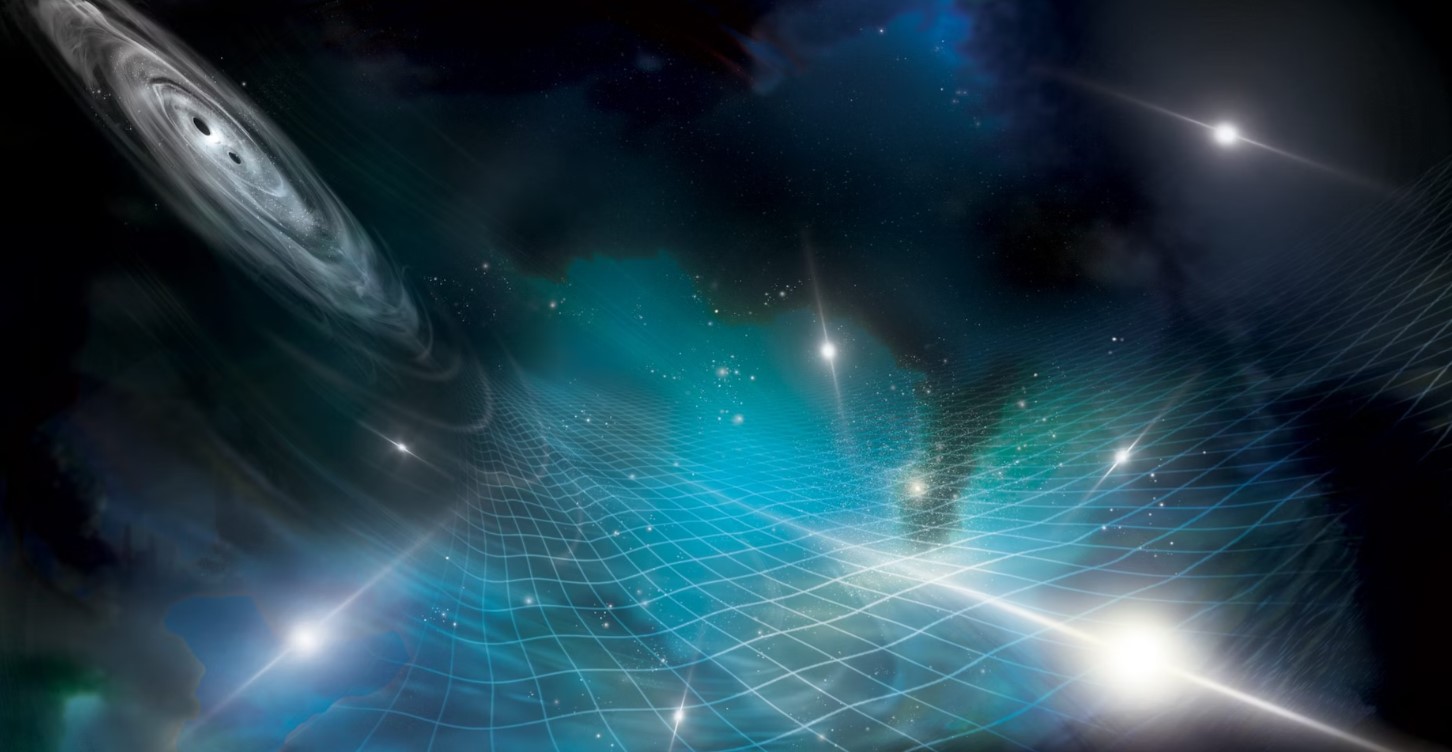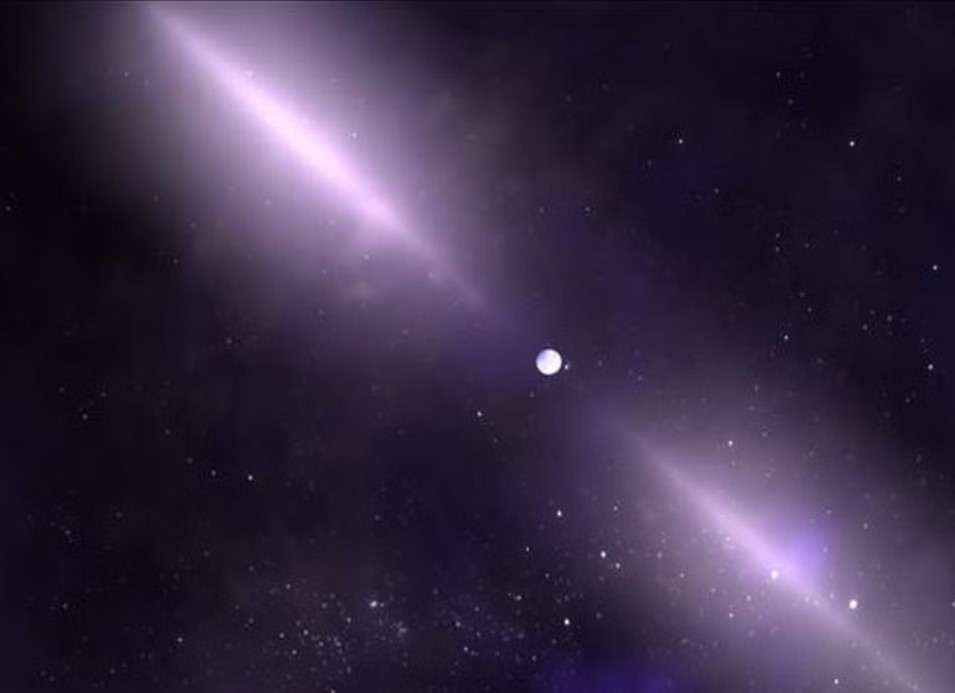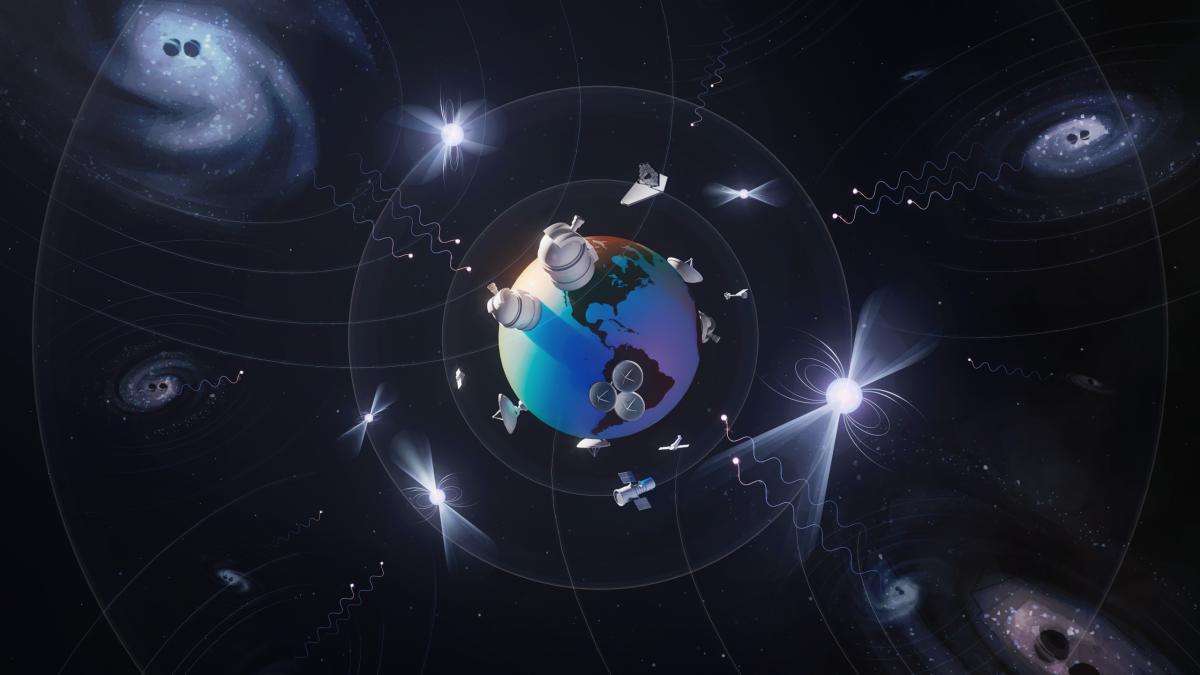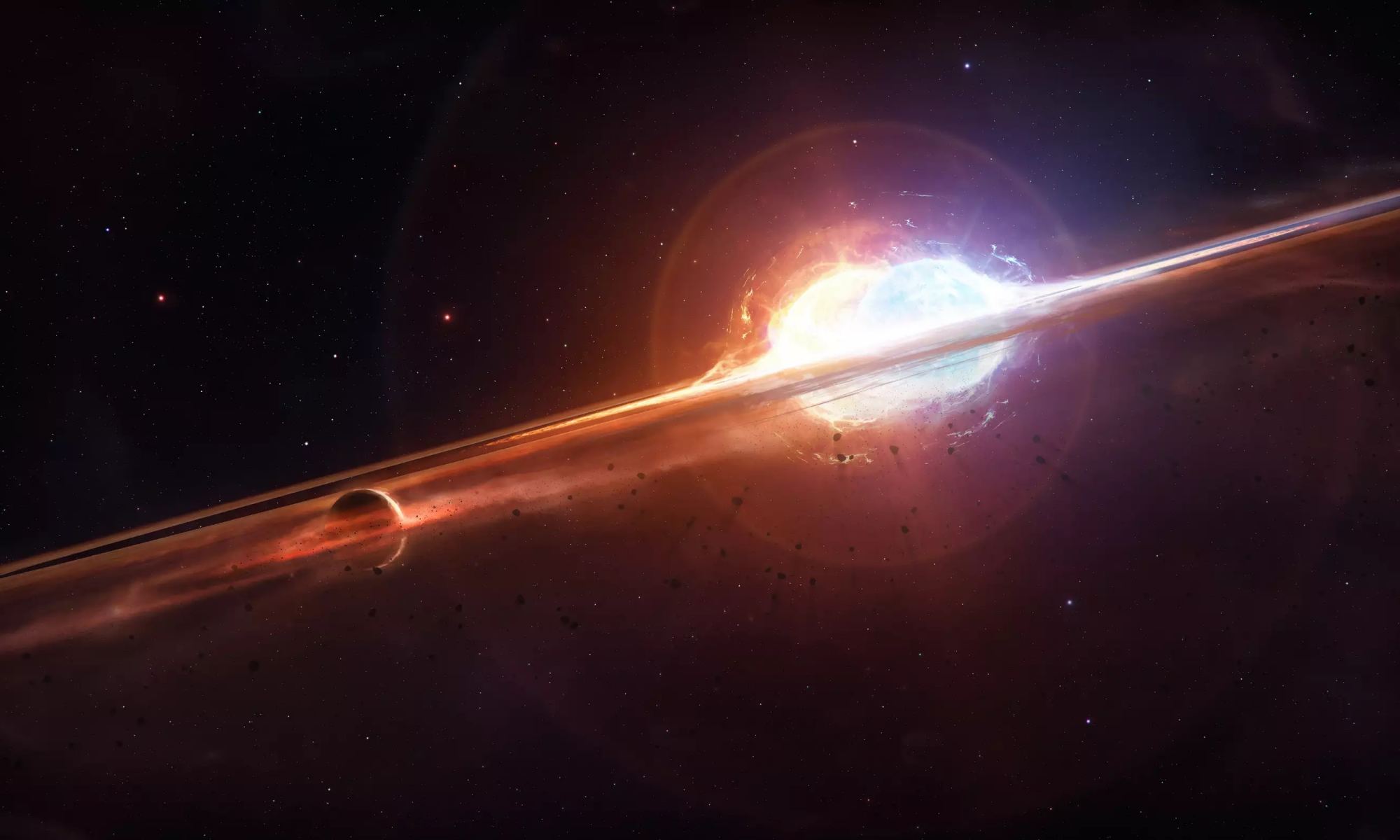We’ve become familiar with LIGO/VIRGO’s detections of colliding black holes and neutron stars that create gravitational waves, or ripples in the fabric of space-time. However, the mergers between supermassive black holes – billions of times the mass of the Sun — generate gravitational waves too long to register with these instruments.
But now, after decades of careful observations, astronomers around the world using a different type of gravitational wave detection method have finally gathered enough data to measure what is essentially a gravitational wave background hum of the Universe, mostly from supermassive black holes spiraling toward collision.
Scientists say the newly detected gravitational waves are by far the most powerful ever measured, and they persist for years to decades. They carry roughly a million times as much energy as the one-off bursts of gravitational waves from black hole and neutron star mergers detected by LIGO and Virgo.

“It’s like a choir, with all these supermassive black hole pairs chiming in at different frequencies,” said scientist Chiara Mingarelli, who worked about 190 other scientists with the NANOGrav (North American Nanohertz Observatory for Gravitational Waves). “This is the first-ever evidence for the gravitational wave background. We’ve opened a new window of observation on the universe.”
The observatories use the combined power of several radio telescopes. In the US and Canada, the NANOGrav observatories include the now destroyed Arecibo Observatory in Puerto Rico, the Green Bank Telescope in West Virginia, and the Very Large Array in New Mexico. This collaboration collected data from 68 pulsars, to effectively form to form a huge type of detector called a pulsar timing array. Astronomers now announced they have found the first evidence of a consistent background hum of long-wavelength gravitational waves that fills the cosmos.
Also reporting similar results is the European Pulsar Timing Array (EPTA), in collaboration with Indian and Japanese colleagues of the Indian Pulsar Timing Array (InPTA). Observatories there include the Effelsberg Radio Telescope in Germany, the Lovell Telescope of the Jodrell Bank Observatory in the United Kingdom, the Nançay Radio Telescope in France, the Sardinia Radio Telescope in Italy and the Westerbork Radio Synthesis Telescope in the Netherlands.
For this collaboration, 25 years of observing 25 pulsars revealed the gravitational waves with wavelengths much longer than those seen by other experiments.

“Pulsars are actually very faint radio sources, so we require thousands of hours a year on the world’s largest telescopes to carry out this experiment,” said Dr. Maura McLaughlin of West Virginia University and co-Director of NANOGrav, in a press release. “Now, [our] pulsar observations are showing the first evidence for the presence of gravitational waves, with periods of years to decades.”
“We are incredibly excited that after decades of work by hundreds of astronomers and physicists around the world, we are finally seeing the signature of gravitational waves from the distant Universe.,” said Dr. Michael Keith, from the Jodrell Bank Centre for Astrophysics at The University of Manchester, in another press release. “The results presented today mark the beginning of a new journey into the Universe to unveil some of its unsolved mysteries.
The gravitational wave detections we’ve been reporting on since 2015 by the ground-based LIGO (the Laser Interferometer Gravitational-wave Observatory) and Europe’s Virgo detector are fleeting, high-frequency gravitational waves. A longer, low-frequency signal could be perceived only with a detector much larger than the Earth. By studying the pulsars, astronomers essentially turned our sector of the Milky Way Galaxy into a huge gravitational-wave antenna.
Pulsars are the ultra-dense remnants of the cores of massive stars following their demise in a supernova explosion. Pulsars spin rapidly, sweeping beams of radio waves through space so that they appear to “pulse” when seen from the Earth. The fastest of these objects, called millisecond pulsars, spin hundreds of times each second. Their pulses are very stable, and astronomers can use them as precise cosmic timepieces.

Supermassive black holes are thought to reside at the centers of the largest galaxies in the Universe. When two galaxies merge, the black holes from each end up orbiting each other as a binary system long after the initial galaxy merger. Eventually, the two black holes will unite. In the meantime, their slow dance around each other stretches and squeezes the fabric of space-time, generating gravitational waves that emanate out like ripples in a pond.
Since they are long-lasting, the gravitational-wave signals from these gigantic binaries are expected to overlap, like voices in a crowd or instruments in an orchestra, producing an overall background hum that imprints a unique pattern in pulsar timing data.
NANOGrav’s results were published in five papers in The Astrophysical Journal Letters, while papers appeared in other journals from the European, Australian, Indian and Chinese pulsar timing arrays.
The NANOGrav papers report a “strong evidence” of these long, low-frequency signals, reporting the detection at a 3.5- to 4-sigma level, which is less than the 5-sigma threshold that physicists usually want to claim a discovery. But a 4-sigma amplitude is better than the 3.5 sigma from the Cosmic Background Explorer (COBE) spacecraft on the cosmic microwave background (CMB). The scientists for NANOGrav say they have more than 99% confidence that the signal is real.

But to confirm these measurements, the researchers want to collaborate even further to expand the current datasets to create an International Pulsar Timing Array. This will use the power of an array consisting of over 100 pulsars, observed with thirteen radio telescopes across the world, combining more than 10,000 observations for each pulsar. This should allow the astronomers to obtain solid proof of having detected a pervasive background hum of gravitational waves.
